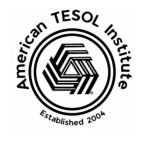Douglas Adams’ Babel Fish, a small, leech-like creature that allows instant understanding of any spoken language, captivated readers of The Hitchhiker’s Guide to the Galaxy. Once a whimsical idea from the 1979 sci-fi classic, this concept is no longer confined to the realm of fiction. Advances in technology have brought us closer to making Adams’ vision of universal translation a reality. For TESOL teachers, these advancements raise intriguing questions about the future of language education and how it will evolve in a world with tools that can break down language barriers.
The Babel Fish: Fiction to Reality
The Babel Fish in Adams’ book works by feeding on brainwave energy and translating any spoken language directly into the host’s mind. Today’s technology, while not biological, mimics this functionality with astonishing accuracy. Devices like Google Pixel Buds and apps such as Google Translate offer near-instantaneous audio translation. Additionally, AI-powered software, including DeepL Translator, provides contextual accuracy that once seemed impossible.
Even wearable technology is catching up. Think of devices like the Waverly Labs Pilot, which works in real-time to facilitate conversations between people who speak different languages. While these innovations lack the quirky biological twist of the Babel Fish, they effectively fulfill the same purpose: breaking down linguistic barriers.
What Does This Mean for Language Education?
1. The Role of TESOL Teachers Will Evolve
As translation devices improve, some might wonder whether learning a second language will still be necessary. While the Babel Fish may offer a quick fix for communication, TESOL teachers provide much more than simple linguistic instruction. Teachers help students develop cultural competence, critical thinking, and the ability to adapt and connect in diverse settings—skills that machines cannot replicate.
2. Incorporating Technology into the Classroom
Rather than seeing these tools as competition, TESOL educators can embrace them as aids. For instance, translation apps can help students quickly look up unfamiliar words or phrases, freeing classroom time for practicing conversational skills and cultural nuances.
3. Focusing on Emotional Communication
Language is more than just words; it’s about emotions, tone, and subtlety. Machines may be able to translate sentences, but they often miss the deeper context. TESOL teachers can emphasize teaching students how to navigate emotional and cultural aspects of communication that AI cannot yet grasp.
4. Learning as a Human Connection
There’s something uniquely human about the process of learning a language. It requires effort, vulnerability, and connection—all of which help build empathy and understanding. Teachers foster these connections, ensuring that language learning remains a profoundly human experience, even in a tech-driven world.
Other Sci-Fi Predictions That Became Reality
Douglas Adams wasn’t the only author whose speculative ideas have leaped from fiction to fact. Here are a few more examples of sci-fi concepts that became real:
1. Arthur C. Clarke: Communication Satellites
In Wireless World (1945), Clarke envisioned satellites orbiting the Earth to enable global communication. Today, satellites power everything from GPS to mobile internet, making worldwide connectivity possible.
2. Isaac Asimov: Robots and AI
In his Robot series, Asimov introduced the Three Laws of Robotics and explored the ethical and functional roles of robots. While we don’t have humanoid robots with full autonomy yet, AI-powered machines like Boston Dynamics’ Atlas and home assistants like Alexa reflect his predictions.
3. Jules Verne: Submarines and Space Travel
Verne’s 20,000 Leagues Under the Sea (1870) imagined the Nautilus, a fictional submarine far ahead of its time. Modern nuclear-powered submarines have since made underwater exploration a reality. Similarly, his novel From the Earth to the Moon (1865) anticipated human space travel, now commonplace with NASA and SpaceX missions.
4. Philip K. Dick: Virtual Reality
In Do Androids Dream of Electric Sheep? (1968), Dick explored virtual worlds and artificial emotions. Today’s VR headsets and augmented reality technologies like those in the Metaverse echo his vision.
5. H.G. Wells: The Atomic Age
In The World Set Free (1914), Wells described the concept of nuclear deterrents years before they were developed. This sobering prediction underscores the potential for science fiction to inspire innovation and warn of its consequences.
The Future of Language Education
As technology continues to blur the lines between science fiction and reality, TESOL teachers face the exciting challenge of adapting to a world where tools like the Babel Fish exist. While such tools may simplify certain aspects of communication, the role of TESOL educators remains critical in:
- Building cross-cultural understanding: Machines can translate words but not cultural context or emotional nuance.
- Encouraging lifelong learning: Even with translation tools, learning a language offers cognitive benefits and personal growth.
- Preparing for global citizenship: Mastery of English (or any second language) equips students to thrive in an interconnected world.
Conclusion: Teaching in a World of Innovation
The Babel Fish may have started as a quirky sci-fi idea, but its real-world counterparts are reshaping how we think about language and communication. For TESOL teachers, this isn’t a threat—it’s an opportunity. By embracing these advancements while emphasizing the irreplaceable value of human connection, TESOL educators can ensure that language learning remains a vital, enriching journey, even in a high-tech future.
As Douglas Adams famously wrote, the Babel Fish was “more than just a convenience,” and the same can be said of TESOL education in a world full of technological wonders.



